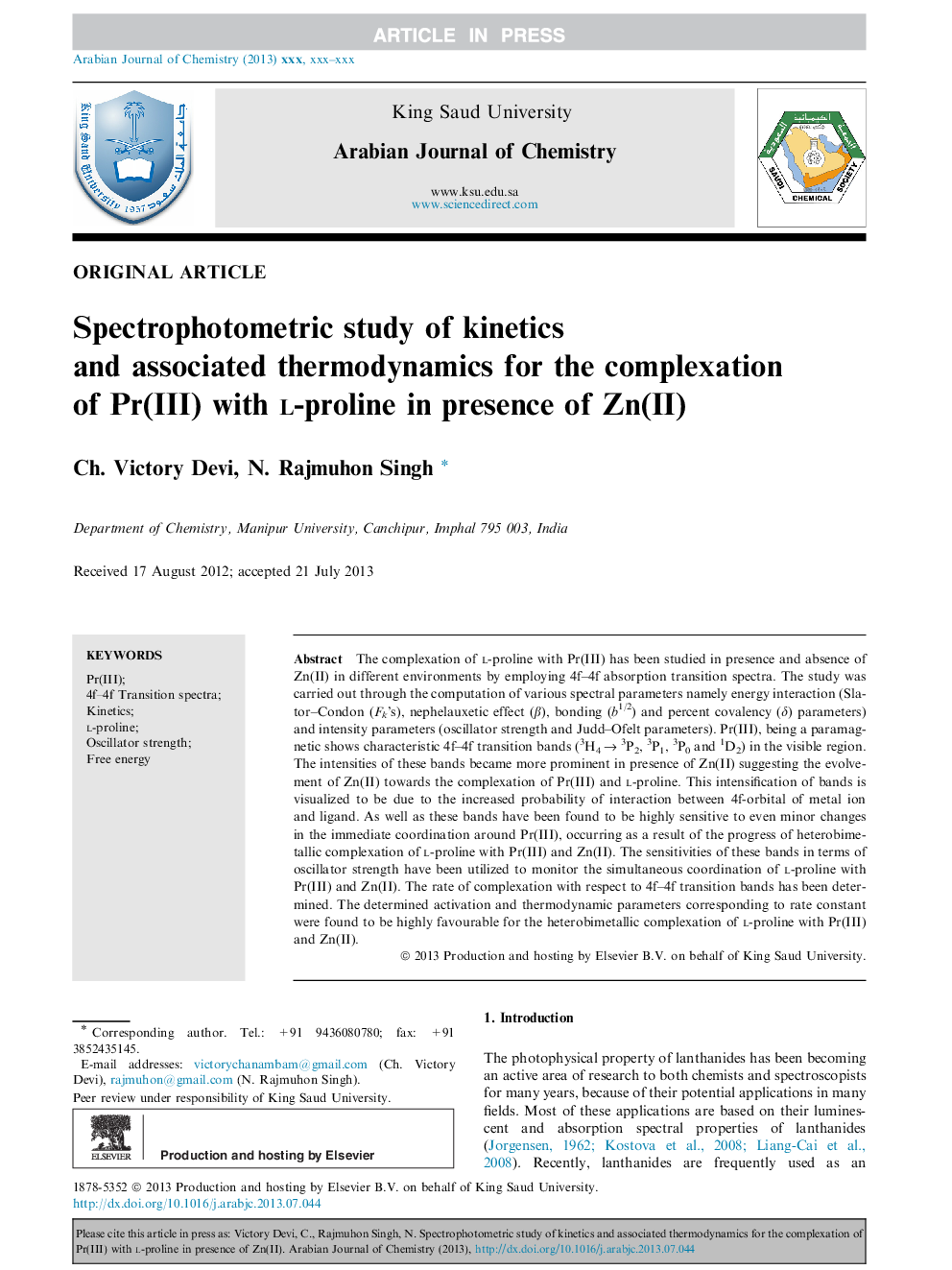| Article ID | Journal | Published Year | Pages | File Type |
|---|---|---|---|---|
| 5142401 | Arabian Journal of Chemistry | 2017 | 8 Pages |
Abstract
The complexation of l-proline with Pr(III) has been studied in presence and absence of Zn(II) in different environments by employing 4f-4f absorption transition spectra. The study was carried out through the computation of various spectral parameters namely energy interaction (Slator-Condon (Fk's), nephelauxetic effect (β), bonding (b1/2) and percent covalency (δ) parameters) and intensity parameters (oscillator strength and Judd-Ofelt parameters). Pr(III), being a paramagnetic shows characteristic 4f-4f transition bands (3H4 â 3P2, 3P1, 3P0 and 1D2) in the visible region. The intensities of these bands became more prominent in presence of Zn(II) suggesting the evolvement of Zn(II) towards the complexation of Pr(III) and l-proline. This intensification of bands is visualized to be due to the increased probability of interaction between 4f-orbital of metal ion and ligand. As well as these bands have been found to be highly sensitive to even minor changes in the immediate coordination around Pr(III), occurring as a result of the progress of heterobimetallic complexation of l-proline with Pr(III) and Zn(II). The sensitivities of these bands in terms of oscillator strength have been utilized to monitor the simultaneous coordination of l-proline with Pr(III) and Zn(II). The rate of complexation with respect to 4f-4f transition bands has been determined. The determined activation and thermodynamic parameters corresponding to rate constant were found to be highly favourable for the heterobimetallic complexation of l-proline with Pr(III) and Zn(II).
Related Topics
Physical Sciences and Engineering
Chemistry
Chemistry (General)
Authors
Ch. Victory Devi, N. Rajmuhon Singh,
